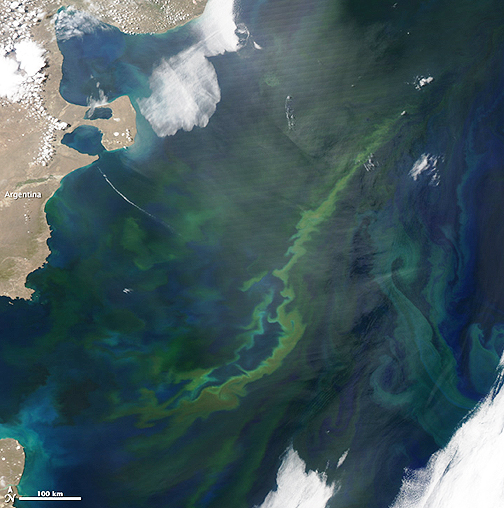Phytoplankton are microscopic, plant-like organisms that harness sunlight to turn carbon dioxide and water into sugars and oxygen (photosynthesis). They are the primary producers of the ocean and the center of the marine food web, providing food for everything from zooplankton to whales. The Moderate Resolution Imaging Spectroradiometer (MODIS) on NASA’s Aqua satellite captured this natural-color image on November 5, 2011. The milky blue and green swirls are evidence of the abundant growth of phytoplankton across hundreds of kilometers of the sea.
These organisms contain pigments (such as chlorophyll) that appear in varying shades of blues and greens, depending on the species. Most of the phytoplankton in the image are likely coccolithophores, single-celled plants that form calcite scales. Blooms of coccolithophores are common in these waters, though diatoms might also be in the mix. The blooms develop frequently in southern spring and summer at an intersection of two great current systems. The warm salty waters of the subtropical Brazil Current flow south and mix with colder, fresher waters that originate in the Southern Ocean and get carried northward by the Malvinas Current. Several major rivers, including the Rio de la Plata, carry nitrogen and iron-rich sediment from the continent into the sea, providing the nutrients needed for plant growth.

NASA image by Jeff Schmaltz, LANCE/EOSDIS MODIS Rapid Response. Caption by Jeff Schmaltz and Mike Carlowicz.

